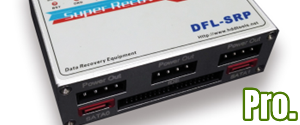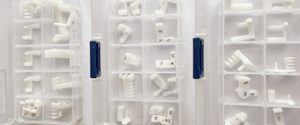What data recovery tools to buy if you want to start a data recovery business?
Free video data recovery training on how to recover lost data from different hard drives?
Where to buy head and platter replacement tools at good prices?
Data recover case studies step by step guide
I want to attend professional data recovery training courses
What’s the relationship between data recovery and data backup?
Data loss is like diseases people suffer, Data recovery is doctors to cure the diseases and Data backup is like prevention measures to have lower rates of the diseases.
If you want to form a great data recovery plan, the first thing is to have a good data backup plan, backup your data wisely and regularly in more than 1 storage medias, like external hard drive, USB drives and donor drives in other PCs. Only if you have a good data backup habit, can you suffer less severe or smaller disaster data loss or you can even avoid data loss for a long time so that you can keep everything running well with you and your business!
However, data backup is just the first step to form a great data recovery plan, it doesn’t mean data backup handles everything and kills data recovery! If that, doctors in the hospital are becoming all unemployed!
We need prepare for data recovery and we need our own data recovery capabilities with professional data recovery tools and data recovery engineers.
Before this article, we wrote one article called Start data recovery wisely and this article will help you understand how to form your own data recovery capabilities.
The following tips are provided by zdnet.co.uk in its technology column and we appreciate their efforts and the writer’s efforts. These tips will help to form a great data recovery plan.
* Identify your data recovery needs
Data Recovery is vital for the survival of your business. Your data defines and separates your business from any other in the market. If failure should occur at any level of your infrastructure it can be felt across the business. You must ask yourself, how would your business survive a disaster? And what provisions do you have in place for your business to continue after?
* Understand the risks
Data loss can range from the accidental deletion of files; to the failure of your entire site. Without data recovery precautions in place you are putting your organisation at risk.
IT failure is considered to be the most common threat to businesses, with electrical, hardware and software failure also posing considered risks.
The threat of fire and natural disaster, although considered less likely can have the most devastating consequences. Findings from a CBI study indicate that a high level of disruptions in 2008 and 2009 were due to extreme weather incidents such as snow, flood or high winds.
* Assess how critical your data is
The key aspect of data recovery is understanding just how critical your data is. By compiling an assessment on the risks to your business you can then develop a tiered recovery strategy that will ensure all levels of your infrastructure can be recovered in the event of a disaster.
* Assess how easily you can recover a file
Data backup is required by all businesses. With legal requirements tightening and data volumes growing out of control, traditional tape backup is no longer a reliable or cost effective means of meeting compliance levels. Managed Online Data Backup Services enable you to instantly recover files within seconds and deduplicate data to make the most of your storage; saving resources and reducing costs. Data is encrypted during the backup process to offer the highest level of security and is ready for recovery if needed.
* Consider what the impact of a server failure would be
Assessment for data recovery calls for you to consider the maximum amount of downtime you can afford for any system before the impact becomes critical to business operations. You can define your data recovery policy according to how critical that system is, the chance of failure and how much you are willing to spend to minimise recovery time.
* Assess how easily you could recover your systems
The process of re-installing an operating system, its service packs and updates, along with applications and new device drivers can take hours or even days, contributing to your overall recovery time. Prior to the lengthy process of application installation and data restoration, a compatible system is required, adding yet more downtime to that ticking clock. The reality is that system failure could result in over week of downtime till your system is back up and running.
* What is the impact of downtime on your company?
For most large organisations, to be without a particular system, such as email for any length of time could result in the loss of business. Should the system running your website fail, and customers attempt to visit an inactive site, the chances are they will not return. The longer the site is down, the more business you could potentially lose. It is vital that you can recover your systems as quickly as possible, reducing downtime and limiting loss of business. Essentially, any length of downtime can be harmful to your business, but extended downtime could spell out the end.
* Assess what method of system recovery is best suited to your critical system
Assessing the critical levels of your specific data and systems, allows you to set a data recovery policy that works best for you depending on the Recovery Point Objective (RPI) of your data.
Bare metal recovery essentially backs up the entire system, enabling you to recover the operating system, application software and data in a single pass, reducing your recovery time by hours. This solution enables you to recover to either similar or dissimilar hardware. Online disk backup allows you to increase the frequency of your backup for more dynamic and rapidly changing data. This Real-time protection solution provides this and, with tiered recovery architecture, you have the flexibility of backing up more frequently on critical systems and less frequently on non-critical systems. This saves you money as it cost-effectively balances your data protection needs.
Another method is continuous data protection (CDP), which improves your time to recover a complete system. With CDP, you backup very rapidly across a LAN to your local vault onsite while simultaneously backing up over the wire to a vault in offsite, providing protection from on-site and natural disasters.
* Consider how your network would survive a disaster
Putting a resilient data recovery policy in place insures your data against failure, but what about your network? Your network infrastructure is vital to continuous running of your organisation. A disaster on site will take out your network as well as your data.
Hosting your network with a service provider offers you a fully managed solution for network recovery. Your network will be accessible even in site failure, ensuring that your business continues as normal.
* Consider how your telephony would survive a disaster
Managed hosting is the ultimate business continuity solution. Not only can you host your data, systems and network safely offsite in the service providers ‘cloud’; you can also protect your telephony systems in the same way. Service providers such as InTechnology offer a portfolio of hosted cloud services to protect your entire infrastructure.
Hosting your IT infrastructure in the cloud covers every aspect for business continuity as well as allowing you access to extra computing resources when you need them. For a truly resilient business continuity solution that is flexible with your business needs, managed hosting is the answer.
Data recovery Salon welcomes your comments and share with us your ideas, suggestions and experience. Data recovery salon is dedicated in sharing the most useful data recovery information with our users and only if you are good at data recovery or related knowledge, please kindly drop us an email and we will publish your article here. We need to make data recovery Salon to be the most professional and free data recovery E-book online.







Comments are closed
Sorry, but you cannot leave a comment for this post.